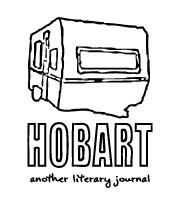Last Poems
by John Farris/Archway Editions, 144 pgs
At the turn of the millennium the Lower East Side teemed with poets and the streets crackled with poetic energy, the utility spray paint markings by street workers scattered down the blocks like blazing, primal glyphs across heaving black scrolls. On East 3rd Street between Avenue C and Avenue D you would find a yellow metal door with BULLET SPACE 292 emblazoned about eye level in black stencil lettering. On Thursday nights at about 10:30 you would find John Farris standing outside leaning on his gnarled cane that he could part the East River with, probably carved from the Tree of Life itself. He made sure to collect his two bucks from every person who went inside. They walked in there with poems, stories, saxophones, speakers, trumpets, subwoofers, hacksaws, turntables, knives, violins, booze, crates of records, haystacks, guitars, weed, microphones, punch bowls, drums, bongs, gourds, goblets, pyrotechnics...You never knew what the hell was going to happen in there: a brawl, a guy setting his head on fire, chairs thrown at someone reading bad shit...What was definitely going to happen, for the most part, was a damn good reading—in the winter me and some guys would roam the neighborhood breaking legs off of thrown-out furniture and use them for firewood, John enthroned by the giant black furnace next to a raging flame. Through cumulonimbus and cirrus clouds of all species of smoke, on the ground floor of Bullet Space, a generation of writers, musicians, charlatans, storytellers, bullshit-artists, and weirdos heard John read his work during arguably one of the most prolific periods of his life. It was there that we heard him read drafts of what became The Ass's Tale (Autonomedia, 2010), as well as his poems, epic and ephemeral, beautiful and brutal, comic and cutting, that sprung from the infinite well of his heart-mind. At 285 East Third Street it was A Gathering of the Tribes, but at 292 it was The Farris School of Poetics and Noetics.
In this long-overdue release of his Last Poems, we see the cantankerous master at work at the twilight of his life, and civilization, occasionally taking a minute to turn to us and give us the middle finger. You can call him a jazz poet, I guess, but not in the bebop/Beat sense, or even in the spirit of 'Trane and Monk. The jazz part of John Farris' poetics aligned more with his heroes Albert Ayler (his conversational tone, melodic gregariousness) and Sun Ra (his grandiosity and sense of cosmos), and contemporaries such as Charles Gayle (the raw spirituality and contemplation) and Matthew Shipp (the precise phrasing and making the familiar profound). His drawings and poems were Art Brut, but make no mistake, he was an extremely well-lettered man, the penultimate autodidact; if he cared at all for institutions or a normal life, he would have been the legendary keeper of Tompkins Square Library or a revered professor of humanities. As a writer, his sharp, stinging irreverence came from Molière (he could speak on The Misanthrope and Tartuffe at-length) and Ferdinand Louis Celine, his psychological depth from Dostoyevsky, his negritude from Aime Cesaire and Leopold Sengor, and his mastery and command of good ol' American English—from the cellular level to arcing, epic spans—from Herman Melville. In life, his brother-in-poetry was the bard Lester Afflick, brother-in-philosophy Norman Douglas, brother-in-arms Steve Cannon, and brother in the Tao, whom he knew longer than any of those guys, and also from Rockaway, the painter Nico Smith.
The poems in this book—like their author on his yellow bike, or propped up by his indomitable cane—teeter on a precarious edge between incandescent sublimity and stark oblivion. Last Poems is John Farris triple-distilled: every line, every lyrical drop, pure and clear. When it came to language, he was not an imagist, but an economist and expressionist. Every word counted, and came from his soul. He could end a poem like no other, the last sardonic note still spinning in the air, or the final chord ringing through your heart. You would encounter this combative, ornery man and then he would pull a fresh poem out of his pocket and read it to you and you'd be moved to tears, laughter, or both. His lyricism wasn't constructed with any kind of intent at all but was incidental; he just thought lyrically, saw things lyrically.
John needed some heavy shit taken up to his place on the fourth floor of Bullet Space once so I helped him and got to see where he lived and worked. It was a spartan setting, with a desk and a single light bulb, large sheets of plastic billowing like sails of a frigid frigate sailing the icy oceans of Jupiter's moon Europa. That was the first time he showed me his drawings. I thought, “This guy is Chinese.” They reminded me of the austere, monochrome, Rivers and Mountains inkwork of the Tang Dynasty, except the rivers and mountains was the man himself.
Uncompromising in his art, John Farris lived a life of gigantic mirths and gargantuan sadnesses. He warned me once about being all-in with poetry. He said there would be a loneliness he “wouldn’t wish on a dog,” that “even the ones you love will hate you sometimes.” Some people write it, engage in it, dabble in it, but John lived it. His oeuvre is as vast as his imagination was, and I hope that Last Poems is the first of many volumes. I hope to see the Selected Poems, Collected Poems, and Short Stories and Fragments of John Farris someday, with all the footnotes and critical bells and whistles. But in the meantime, make your first encounter with John his Last Poems.

